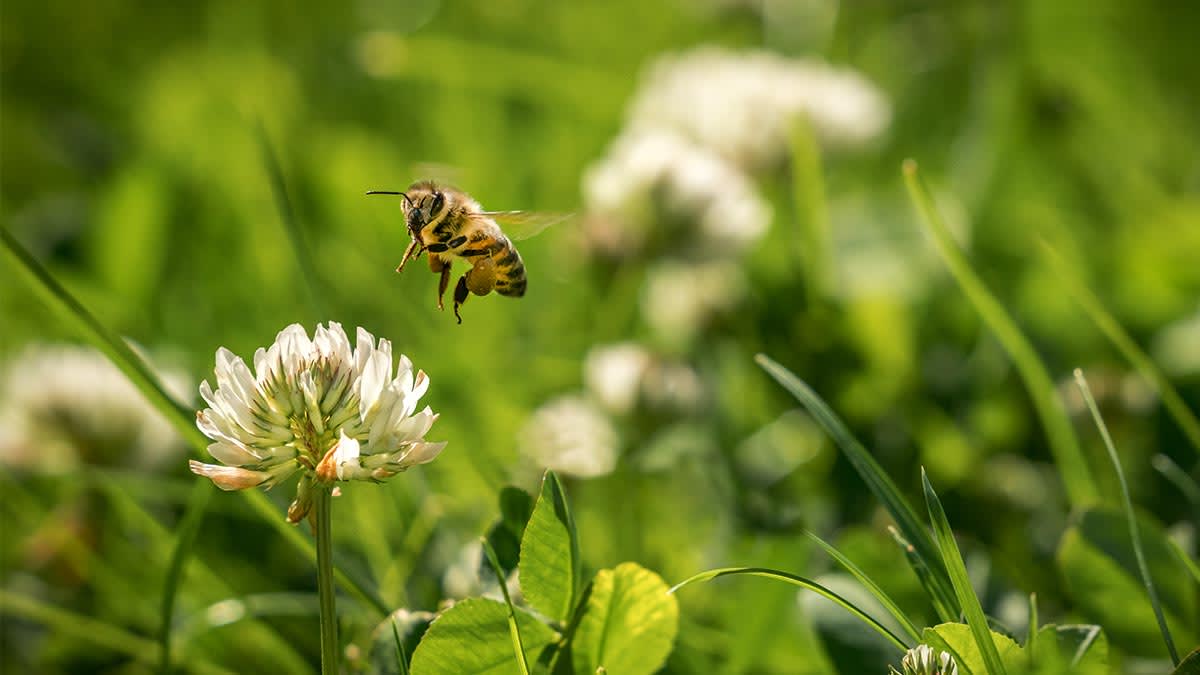
For a variety of reasons, not every lawn owner can do a version of No Mow May. For instance, folks concerned about ticks should keep their grass to a height of 3 inches, because those disease-carriers thrive in tall growth. And some people need to keep their grass low to conform with homeowner association or municipal rules. Here are alternatives to consider, based on your situation.
• Mow “slow.” Reducing your mowing to every two weeks from one—a practice called “slow mow” that many communities are adopting—is another way to help beneficial flowers grow. And that’s a worthwhile goal even in rural areas, where fewer flowers in roadside habitats has stressed pollinator populations, says Evans, the extension educator. “If more farmsteads with huge lawns mowed less frequently and had more flowers in their lawns, that could be very important for pollinators out in those landscapes,” she says.
• Let a few flowers grow on your lawn. Shorter lawns can look well-groomed even with some small flowers sprinkled throughout. Clovers are hardy, grow fast, and aren’t particularly visible, especially on larger lawns. The small white flowers of low-growing aster and the tiny purple blooms of creeping thyme can add dimension and beauty. You can even find lawn-seed mixes that include bee-friendly flowers through specialty seed companies.
• Avoid chemicals on your lawn. Chemical fertilizers and herbicides that get absorbed into your soil or eventually enter the water table threaten the survival of pollinators—not only on your property but also throughout your community. Check out CR’s alternatives for managing your lawn without using these products.
• Designate high- and low-growth areas. If you don’t need a lot of lawn for, say, a child’s play area, set aside a portion to grow just wildflowers. “There’s a lot of potential habitat not serving purposes,” Evans says. “People are turning lawns into multipurpose spaces, so why not also support wildlife?”
• Plant a pollinator garden. This won’t necessarily help pollinators in the early spring, but it can help support them later in the season. Check with your state or county’s agricultural extension service for advice on the best plants for your area.









